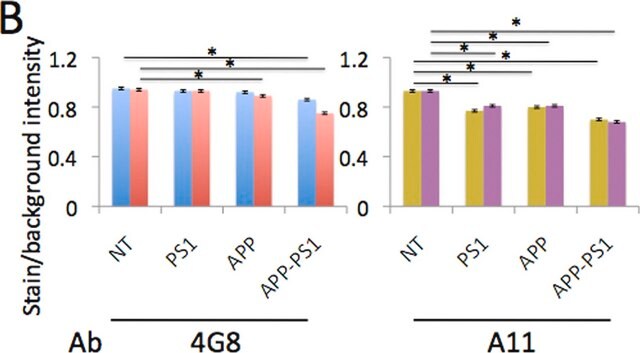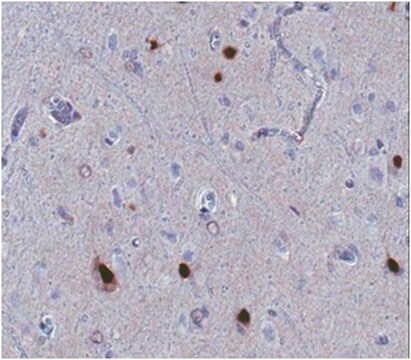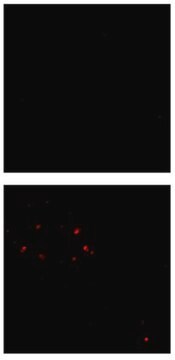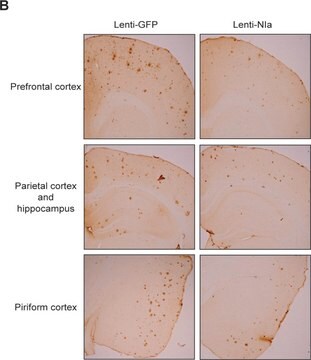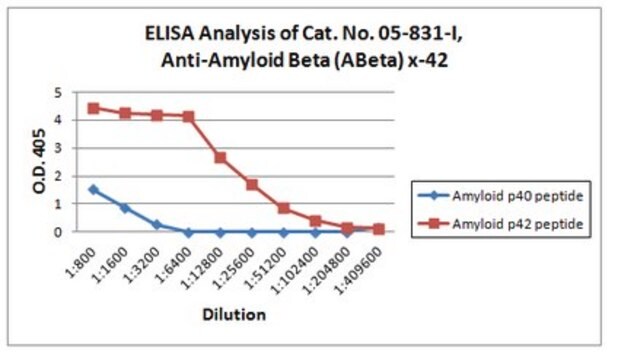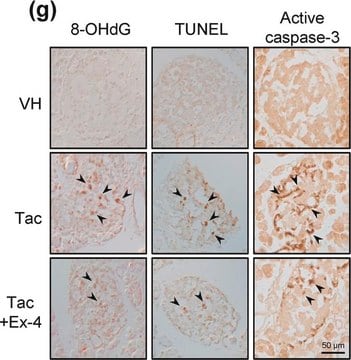MABN879
Anti-phospho-Amyloid beta Antibody (Ser26), clone 5H11C10
clone 5H11C10, from mouse
Sinônimo(s):
Aβ peptide, Ser26 phosphorylated, Abeta peptide, Ser26 phosphorylated, Amyloid β peptide, Ser26 phosphorylated, Aβ1-40, Ser26 phosphorylated, Aβ1-42, Ser26 phosphorylated, Abeta1-40, Ser26 phosphorylated, Abeta1-42, Ser26 phosphorylat
About This Item
Produtos recomendados
fonte biológica
mouse
Nível de qualidade
forma do anticorpo
purified immunoglobulin
tipo de produto de anticorpo
primary antibodies
clone
5H11C10, monoclonal
reatividade de espécies
human
técnica(s)
ELISA: suitable
immunofluorescence: suitable
western blot: suitable
Isotipo
IgG1κ
nº de adesão NCBI
nº de adesão UniProt
Condições de expedição
ambient
modificação pós-traducional do alvo
phosphorylation (pSer26)
Informações sobre genes
human ... APP(351)
Descrição geral
Especificidade
Imunogênio
Aplicação
Western Blotting Analysis: 2 µg/mL from a representative lot detected Ser26-phosphorylated oligomeric amyloid beta (pA ) peptides in brain extracts from 8-month old APP/PS1KI transgenic mice, but not in extracts from age-matched non-transgenic mice (Courtesy of Dr. Kumar Sathish, University of Bonn, Germany).
Note: Formic acid (88%) treatment following heat retrieval is recommended for immunohistochemical detection of aggregated intraneuronal Abeta peptides in brain sections (Kumar, S., et al. (2013). Acta Neuropathol. 125(5):699-709; Christensen, D.Z., et al. (2009). Brain Res. 1301:116-125).
Qualidade
Isotyping Analysis: The identity of this monoclonal antibody is confirmed by isotyping test to be IgG1κ.
Descrição-alvo
forma física
Outras notas
Não está encontrando o produto certo?
Experimente o nosso Ferramenta de seleção de produtos.
Código de classe de armazenamento
12 - Non Combustible Liquids
Classe de risco de água (WGK)
WGK 1
Certificados de análise (COA)
Busque Certificados de análise (COA) digitando o Número do Lote do produto. Os números de lote e remessa podem ser encontrados no rótulo de um produto após a palavra “Lot” ou “Batch”.
Já possui este produto?
Encontre a documentação dos produtos que você adquiriu recentemente na biblioteca de documentos.
Nossa equipe de cientistas tem experiência em todas as áreas de pesquisa, incluindo Life Sciences, ciência de materiais, síntese química, cromatografia, química analítica e muitas outras.
Entre em contato com a assistência técnica
